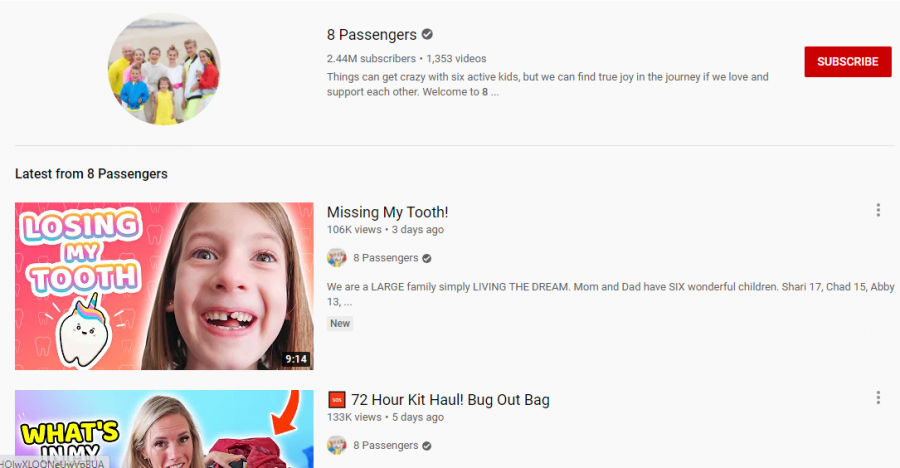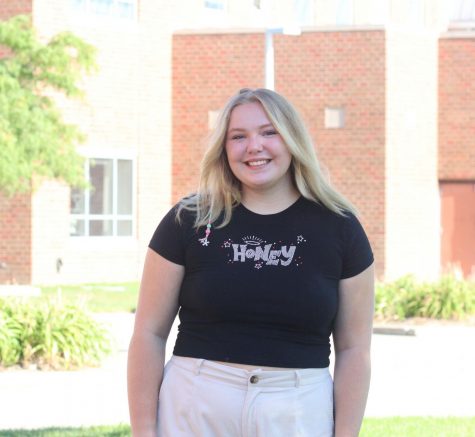A new age of child stars
The way social media has changed childhood fame
Photo courtesy of 8 Passengers
8 Passengers is a popular YouTube family. The Frankes post videos centered around their 6 children and have gained almost 2.5 million subscribers. The family has been called out by multiple Youtube and TikTok creators for using their children for clickbait and showing neglect in their videos.
October 13, 2020
Almost every teenager has some sort of social media. Whether it be Instagram, Snapchat or Tiktok, some part of their lives is on display for the world to see.
Teenage social media influencers have quickly gained fame by posting their own content on multiple platforms. Most teenage influencers chose to get famous on their own and are not pressured by their parents to gain fame. These influencers post what they want about their lives and choose how personal they would like to get with their followers. Social media can have a positive influence on young people and give them a creative outlet, but at other times it can be damaging.
When parents encourage their children to post on social media it can often lead to them resenting the thing they once loved. In an interview with Intelligencer, an anonymous popular YouTube creator talked about her mother pressuring her to create videos to earn ad revenue. She then talked about how this led to her developing an anxiety disorder and quitting YouTube.
When parents get involved in what their child is posting online, it should be in the best interest of their child, not in the interest of money. Parents should monitor what they post and make sure they are staying safe online.
Another example of childhood social media influencers is family vlogging. Parents will often vlog their day with their children and post on YouTube. Many family vlogging accounts are positive and show light-hearted and fun parts of the family’s life. But unfortunately, this is also where the social media industry can become toxic for young children.
One problem with parents posting their children on social media is it can teach the children to value how they appear on-camera and what they have to offer their parents.
When parents choose to post their children on social media it is their responsibility to keep their children’s private life behind the scenes. Certain events that happen while a child is growing up should be kept private between the family and not posted online for the world to see. A positive example of this is with the Ballinger Family. On their YouTube Channel, the family posts weekly vlogs. In one vlog the mother, Jessica Ballinger explains that they would be taking a break for the week because of the death of a family pet. By not filming the event, Ballinger chose to keep the grief of her family off of the internet.
On the opposite side of the spectrum, many family vloggers have been caught using their children for “clickbait.” With titles exploiting the children’s pain or misfortune, parents are able to rack up more views, ultimately resulting in more money.
Childhood stars in Hollywood are very different from child social media influencers. Child performers work on contracts that control their hours, schooling and working conditions. Child actors are also protected by Coogan Laws, which ensure that the earnings of the minors are their property and not their parents. They also put away 15% of all earnings into a trust fund until they become an adult. Children on social media have no laws to protect them. Developing laws and regulations like the ones to protect child actors could help to keep children on social media from being exploited by their parents.
Social media is not always a negative thing and is enjoyed by many, but it is important that we all use it responsibly.







